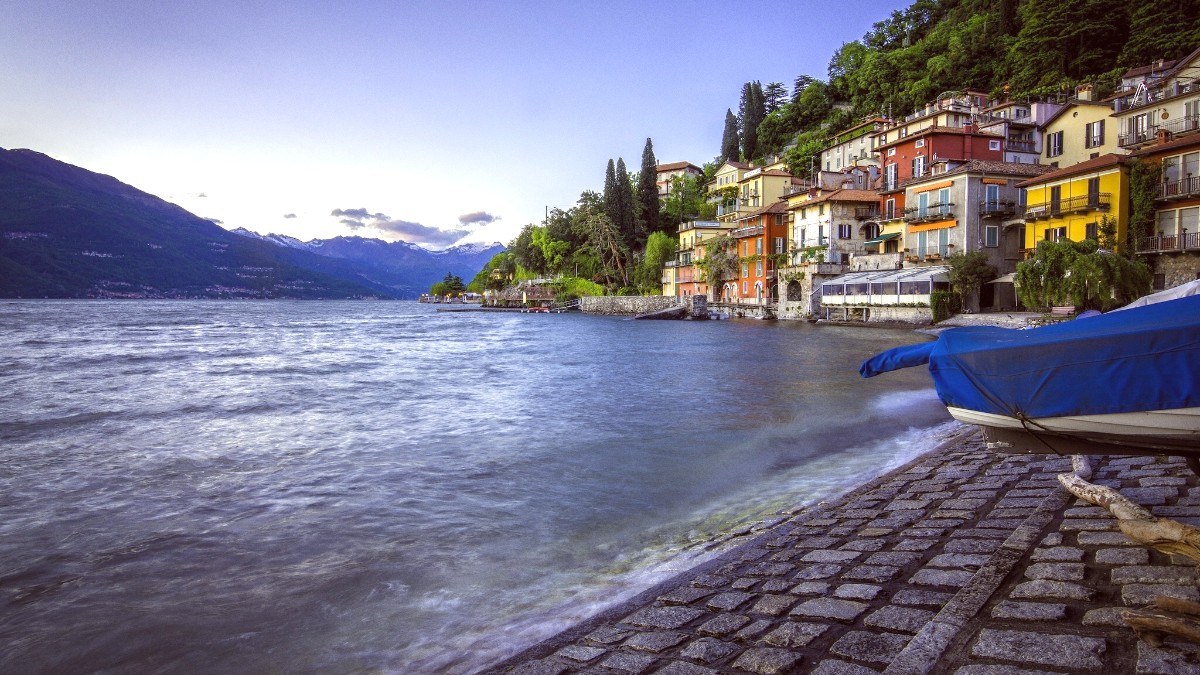
Lombardy And The Lakes, Italy
Lombard cuisine, specifically that of Bergamasca, distinguishes itself with a focus on butter and lard rather than olive oil, reflecting its northern Italian location. Dishes are often hearty, made to sustain farmers and workers through colder months.
Polenta, a versatile cornmeal porridge, constitutes a staple of the local diet, appearing as an accompaniment to many dishes or as a main course.
Lunch (pranzo) is typically from 12:30 PM to 2:30 PM. Dinner (cena) generally starts later, from 7:30 PM onwards.
A "coperto" (cover charge) or "pane" (bread charge) is common and will appear on your bill per person. This covers bread, tablecloth, and service setup. It is not a tip.
Espresso is typically drunk standing at the bar. Cappuccinos are generally a breakfast drink. Ask for "acqua naturale" (still) or "acqua frizzante" (sparkling).
Half-moon shaped pasta pockets filled with meat, breadcrumbs, Parmesan, and sometimes pear or amaretti. Served with melted butter, sage, and crispy pancetta.
A quintessential Bergamo pasta dish found in almost any traditional restaurant.
A sweet sponge cake resembling polenta, filled with hazelnut, chocolate, and rum, covered in marzipan with chocolate "birds."
La Marianna, a historical restaurant in Citta Alta, is known for this specialty.
Scarpinocc de Par (cheese & herb filled pasta), Coniglio alla Bergamasca (rabbit in rich sauce), and Torta Donizetti (ring-shaped sponge cake with candied fruit).
These dishes highlight the region's diverse culinary tradition.
Explore Valcalepio DOC red and white blends from the Bergamo hills. The nearby Franciacorta region is famous for its sparkling wine, made using the traditional method, often likened to Champagne.
Grappa is a potent grape-based pomace brandy. Amaro is a category of herbal liqueurs, often bitter. Both are typically consumed as a digestivo after meals.
Bergamo features Michelin-starred or high-end restaurants. These focus on refined Lombard cuisine and modern Italian dishes, presenting an elevated dining experience.
Includes Trattorias (traditional, family-run), Osterias (rustic, local wines, changing menu), and Ristoranti (more formal with wider menus).
For quick, affordable bites, Bergamo features various options.
Mercato Sant'Alessandro (Citta Bassa): A daily indoor food market furnishing fresh produce, meats, cheeses. Mercatanti (Citta Alta): Occasionally features street food vendors and artisan products during events.
Excellent for self-catering or an immersive experience.
While traditional Italian cuisine dominates, Bergamo also features some international restaurants (e.g., Chinese, Japanese, Indian), mainly in Citta Bassa, catering to diverse tastes.
Offers choices beyond the local fare.
Italy is generally vegetarian-friendly with pasta pomodoro, pizza margherita, and vegetable sides.
Becoming more common. Look for explicit "vegan" menus or ask "È vegano?"
Awareness is increasing. Many pizzerias feature gluten-free crusts. Look for AIC certified restaurants.
Menus often list common allergens. Always inform your server about any allergies.
Awareness about celiac disease and gluten intolerance is increasing in Italy. Many pizzerias now feature gluten-free crusts.
Look for restaurants certified by AIC (Associazione Italiana Celiachia) or ask "Senza glutine?"
Italian menus often list common allergens next to dish descriptions, sometimes with symbols.
Always inform your server about any allergies ("Ho un'allergia a..." - I have an allergy to...).
Dedicated Halal or Kosher restaurants are limited in Bergamo. It is best to check with local religious communities for resources.
For any specific dietary needs, always inform your server clearly and in advance. While Italy is adaptable, smaller establishments might have fewer specialized options.
Beyond dining, Bergamo presents opportunities to immerse yourself in its food culture.
Learn to make traditional Bergamasca dishes like casoncelli pasta or polenta. Many local chefs or tour operators present hands-on classes.
Look for opportunities to learn about local crafts, like lacemaking or wood carving, if available from local artisans. These furnish a direct connection to traditional skills.
Attend an opera performance at the historic Donizetti Theatre, especially during the Donizetti Opera Festival in autumn. This presents a world-class cultural experience.
Bergamo hosts various food-related events throughout the year, especially harvest festivals in autumn, celebrating local produce like chestnuts, mushrooms, and cheese.
Check local event listings for current happenings.
Seek out local agriturismi or small family-run businesses in the surrounding valleys. These often present opportunities for authentic interaction with local life.
Farm tours or traditional meal sharing experiences are possible.
Explore local flavors with expert guides. Many tours include tastings and visits to artisan shops. Find options on platforms like GetYourGuide.
Discover the wines of Valcalepio and Franciacorta. Some tours include vineyard visits and cellar tastings, available through various local operators and booking sites.
Seek out specialized tours focusing on cheese production, olive oil mills, or seasonal produce markets for culinary insight. Inquire at tourist information centers.
For the freshest local experience, visit Mercato Sant'Alessandro in Citta Bassa in the morning. Here, you can immerse yourself in the atmosphere, discover regional ingredients, and even pick up supplies for a picnic in Parco dei Colli.